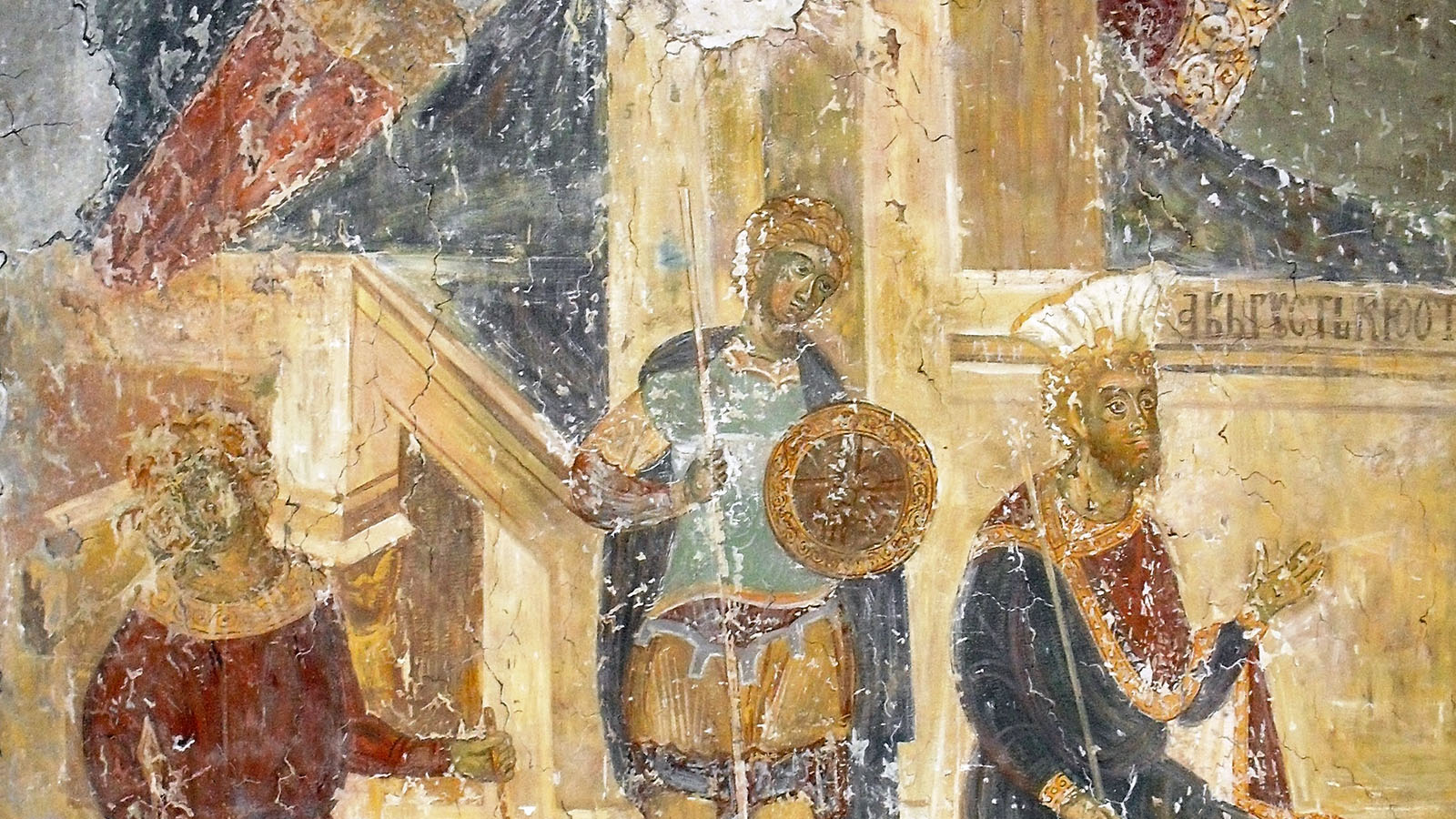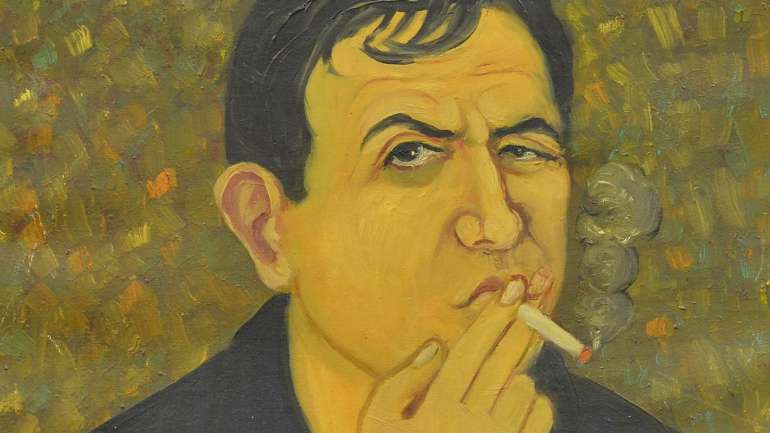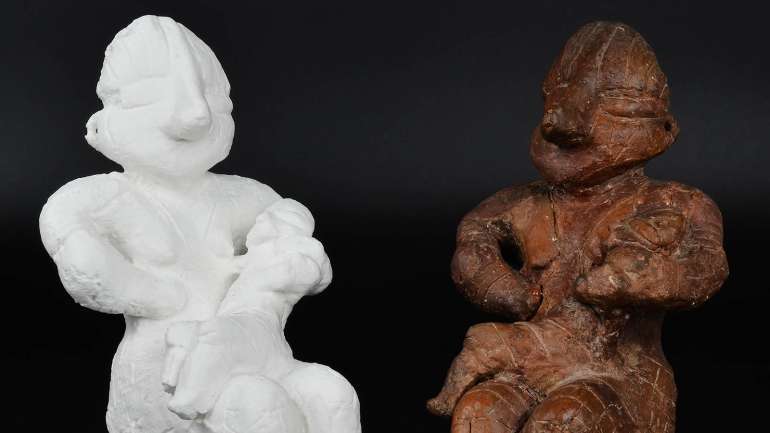By: Branislav Cvetković, museum advisor
On Monday, June 26, 2023, a special exhibition of copies of medieval paintings was opened in the “Horeum Margi-Ravno” Museum in Ćuprija, as part of the close cooperation of the Ćuprija and our museums, and as part of the Vidovdan celebrations in which the Ćuprija Museum has been participating for years.
The name of the thematic exhibition organized on the occasion of this year’s “Vidovdan Celebrations” event is a paraphrase of a fundamental study devoted to the complex relationship between real events from history and their more or less stylized echoes in art, the author of which was one of the leading Serbian and world medievalists, Vojislav J. Đurić, academician and professor at the Faculty of Philosophy in Belgrade. The exhibition as a special event is a continuation of close cooperation between the museums in Ćuprija and Jagodina, recently further formalized by the fact that the two institutions engaged in the processing of archaeological material in the Ravanica monastery, part of the new research project of the Ravanica complex.
The exhibition consists mostly of copies of wall paintings from monasteries built between the 12th and 15th C. in different regions of the Serbian medieval state, and as such they are an important segment of the national heritage and a form of its protection. The exhibits belong to the original corpus of the Gallery of Frescoes of the National Museum in Belgrade, which after many years of cooperation, crowned by the exhibition of medieval portraits of rulers in the Museum in Jagodina, were taken over for long-term use. The concept of the exhibition is based on the complex relationship between image and word in medieval culture: copies of monumental and miniature paintings from the regions of Kosovo, Metohija, Raška, Levač and Athos provide an impressive presentation of political theory, historical context and a set of historical and religious themes. The largest number of exhibited copies are portraits of historical figures whose artistic, textual and iconographic contents reveal a rich set of original data on the developed royal and ecclesiastical-political ideology of the medieval state.
A key step in the construction of political theory of the early Nemanjićs was establishment of the cult of the dynasty’s founder and first national saint, which had parallels in the cult practice not of Byzantium, but of Central and Western Europe. The appearance of vita cycles with themes dedicated to the lives of St Simeon Nemanja and St Sava the Serbian also attracted attention of world medievalists, who saw in them a significant coincidence with similar phenomena in Georgia and Armenia at the time. The earliest example of Nemanja’s life fresco is preserved in the first church dedicated to him as a saint, the southern chapel of the exonarthex in Studenica, which was built by his grandson, King Stefan Radoslav. A better preserved scene is the Transfer of the relics of St Simeon Nemanja from Hilandar in Studenica (cat. no. 1), which shows that the essence of this painted cycle is not depiction of Nemanja’s life as a ruler but as a monk of Mount Athos and then a saint: on the fresco painted until 1233 a procession with relics can be seen, which is met by clergy and monks in front of Studenica with a processional icon of the Virgin in Prayer with an embroidered podea, while in the background is the Studenica church with a red dome. It is extremely significant to compare this scene with the same subject from 1208, several decades younger and better preserved (cat. no. 2), from Sopoćani, painted after 1270. The hierarchical difference of Nemanja’s sons who carry the relics is shown by their costume and height (Vukan is significantly shorter than Stefan), in front of the monastery there are only monks and the processional icon is decorated with pearls and jewels. The second in origin within the Nemanid dynasty is the cult of St Sava, who during his lifetime was a key figure in the generation, firstly as the Studenica archimandrite, then as the first archbishop. The exhibition shows his image in Gračanica from around 1320, painted with Sts Constantine and Helen which highlights the learned parallel between the first Serbian archbishop and the first Christian rulers (cat. no. 3). In addition, the sakkos with which it is shown testifies to the fact that during the time of King Milutin, the church leaders gained the right to wear and be represented in this special vestment of Constantinople origin.
The Portrait of Archbishop Danilo II from the Church of the Virgin Hodegetria in the Patriarchate of Peć from 1335/7 is of exceptional importance (cat. no. 4). He was a close associate of the kings of the 14th century, a learned diplomat, builder, iconographer, ideologist and the originator of an imposing compilation of the lives of kings and archbishops. In the picture, he is shown in monk’s robes while his holy namesake and patron saint, the prophet, brings him to the patron of his burial church. Very important for the history of ecclesiastical and political ideology is the vault of the temple of St Demetrios in the Patriarchate of Peć, who in 1322/24 was painted by the Greek zograph John for Archbishop Nicodemus. Along with the first two Ecumenical Synods and the Synod of Sava the Serbian, the Synod of St Simeon Nemanja and King Milutin (cat. no. 5), a symbolic event under the ciborium of two rulers who were not contemporaries and whose purpose is to indicate continuity of the Nemanja’s cult and beginning of the Milutin’s cult at the first years of Stefan Dečanski’s government, and in the context of their comparison with the Thessaloniki Myrrhoblytos.
Several important themes at the exhibition are represented by copies of the wall decoration from Kalenić, whose painting from ca 1420 are with good reason attributed to the painter Radoslav. The first of them is the portrait of Despot Stefan Lazarević as ruler and joint founder (cat. no. 6), who, together with Protovestiarios Bogdan carries the image of the church in his right hand, which is why his royal scepter is in his left. Unlike Bogdan’s wife Milica, who was painted as part of the founding composition, the figure of his younger brother Petar (cat. no. 7) is better preserved, but it should be stressed that after discovery of an Ottoman document, another one named Božidar is known. Above the portrait in the Kalenić narthex, a prominent scene of the Flight of the Holy Family into Egypt (cat. no. 8) is painted, which highlights the piousness of the founders and by placing a personification in form of a ruler above the despot’s figure makes a comparison between him and the pharaoh Ptolemy Philadelphus. Constantine the Philosopher also compared despot with this pharaoh due to their learning in despot’s Vita. The opposite wall bears another equally emphasized scene, the Census of Mary and Joseph in Bethlehem (cat. no. 9). It was noticed a long time ago that it follows patterns from the Chora in Constantinople which are also present in a reduced form in Courtea de Arges. Although Byzantine scholars interpret the Chora mosaic differently, the Kalenić fresco stands out for its unique structure, details, insignia, and inscription naming the central figure in the scene as the Roman emperor Augustus, on whose orders a census was taken in Judea. Viewed in context, the scene is an allusion to the despot’s successful government whose image and insignia are echoed in the figure of Augustus, who was revered in the Middle Ages because he was believed to be a crypto-Christian ruler during whose reign Christ became incarnate.
The exhibition also contains a copy of the precious charter (cat. no. 10), issued on September 11, 1429 by despot Đurađ Branković as the new founder of the Esfigmenou monastery in Athos. It is the only medieval charter on which there are portraits of Serbian rulers and the only one from the Byzantine sphere with portraits of an entire family. The elaborate, two-part miniature depicts members of the despot’s family being dressed in sumptuous clothes and standing in front of an architecture representing the heavenly dwellings of the Celestial Jerusalem.





